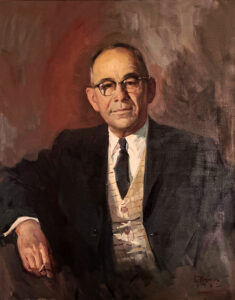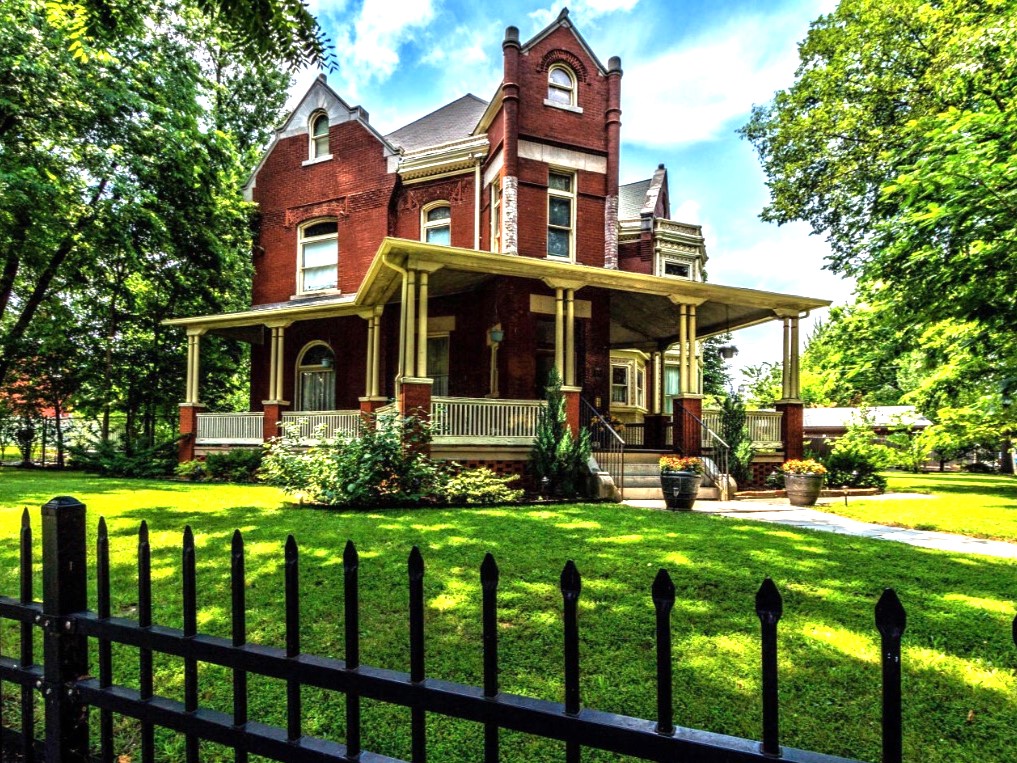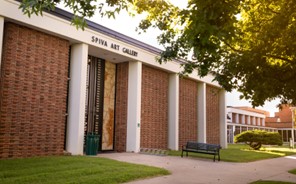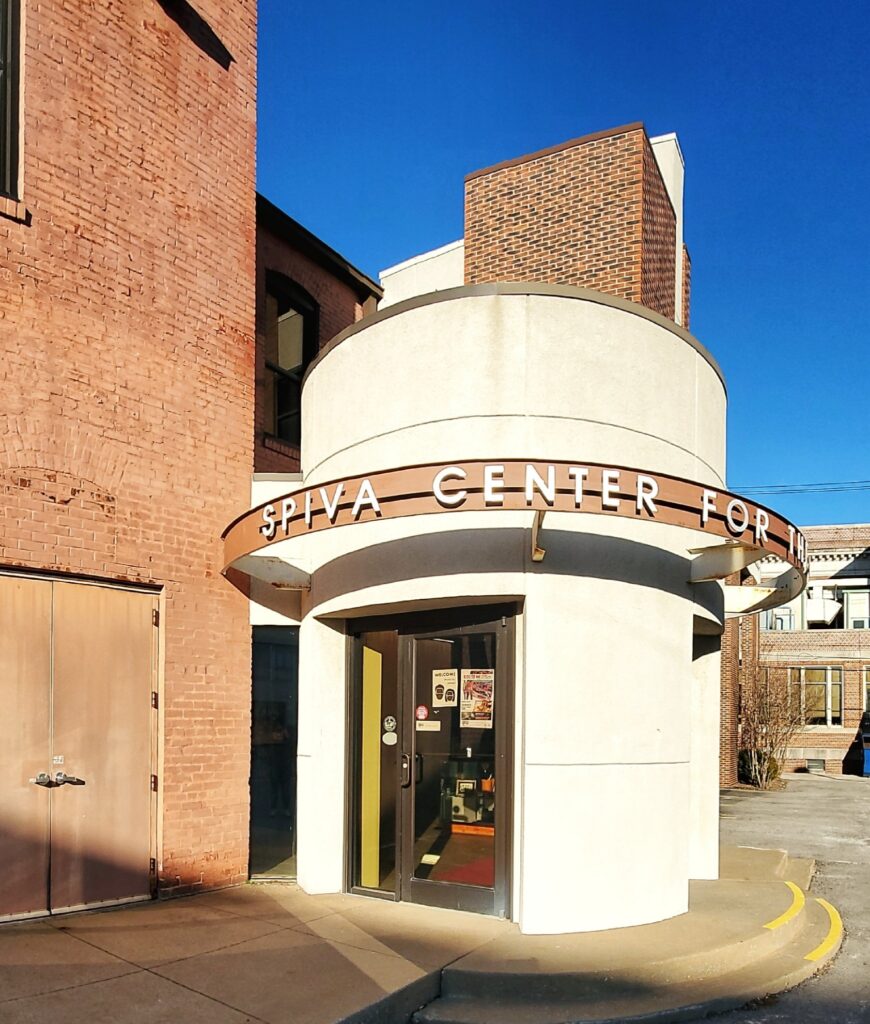History
George A. Spiva and the Ozark Artists Guild
Originally named the Ozark Artists Guild, the George A. Spiva Center for the Arts has enriched the local region with visual arts experiences since 1948.
Focusing on the visual arts, the Ozark Artists’ Guild was organized in 1948 and chartered as a Missouri benevolent corporation in 1957. In 1958 the George A. Spiva family donated a building at 406 Sergeant Avenue in Joplin to the Guild, to be operated “as a public cultural center.” In 1969, the Ozark Artists Guild changed its name to Spiva Art Center and in 1994, amended it to George A. Spiva Center for the Arts.
Founded on the belief that opportunities in the arts should be available to all, George A. Spiva Center for the Arts continues to flourish through the generosity of members and friends who share the same passion and vision of its namesake.

Affectionately known to friends as “Little George,” George A. Spiva’s contributions to the artistic and cultural heart of his hometown of Joplin, Mo., have continued to resonate throughout the years.
Though never one to publicize his philanthropic efforts, they epitomize the character of the man whose life was cut all too short at age 63.
George attended Joplin High School and later the University of Missouri. During his professional career he served as a director of First National Bank and Four States Broadcasters, and director of Eagle-Picher Industries, among other business interests.
His civic work included tenure as president of the Joplin Chamber of Commerce and service on the board of directors of Freeman Hospital, where he was a major contributor to its expansion efforts. He helped establish air service to Joplin in 1944 and was a founder of the radio station KFSB.
Throughout his lifetime, George followed the example of his father, George Nicholas Spiva, who taught him the importance of generosity and giving back to one’s community. He would later honor his father by designing and building Spiva Memorial Park in downtown Joplin.
A month before he passed away in 1967, George was honored with the Joplin Chamber of Commerce’s first annual “Outstanding Citizen of the Year Award.” It was presented for his outstanding contributions to the city’s cultural, art and civic functions throughout the years.
Spiva’s Historic Locations

The Zelleken House (4th & Sergeant)
Built in 1893 by Edward Zelleken, this historic residence became Spiva’s initial home. After Zelleken’s passing in 1920, his daughter inherited the house. Along with members of Ozark Artists Guild, George worked to secure a facility that could house Joplin’s first arts center. He donated $10,000 to the guild, which purchased the Zelleken house at 406 S. Sergeant Ave. in 1958.

Missouri Southern State University
By 1967, Spiva had grown and needed a larger space to accommodate its expanding programs.
The center moved to the Fine Arts Building on the campus of Missouri Southern College – now Missouri Southern State University. George was instrumental in the move, having given the lead gift of $100,000 to purchase the Mission Hills estate as the location for the new four-year college.

Cosgrove Building (3rd & Wall)
The iconic location at 3rd and Wall became synonymous with Spiva from 1996 to 2022. The historic Henrietta Cosgrove building was renovated to host three galleries and two classrooms, serving as the heartbeat of Joplin’s art community for over two decades.
Today & Beyond
Spiva’s journey has now brought it to the state-of-the-art Harry M. Cornell Arts and Entertainment Complex in downtown Joplin. As we reflect on our history and numerous homes, we are invigorated by the promise of what the future holds in this modern space.
